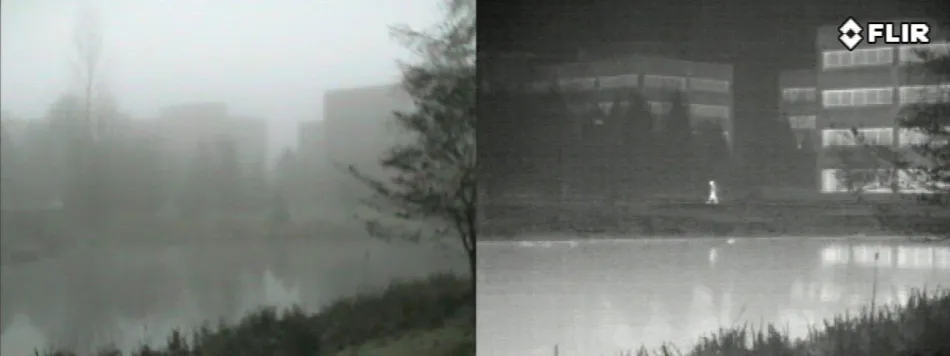Can Thermal Imaging See Through Walls? And Other Common Questions
Popular media has been responsible for a wealth of misinformation throughout the years about thermal—or infrared—imaging.
Popular media has been responsible for a wealth of misinformation throughout the years about thermal—or infrared—imaging. What exactly can thermal cameras “see” through? To answer that, here’s a rundown of the most commonly asked questions we receive about what you can and can’t see through using a thermal camera.
(Knowledgeable individuals might point out that thermal cameras don’t “see” anything: they detect heat and then assign colors based on the range of temperatures detected by the sensor. However, we’ll use it as a shorthand in this article.)
Can thermal imaging see through walls?
No, thermal cameras cannot see through walls, at least not like in the movies. Walls are generally thick enough—and insulated enough—to block any infrared radiation from the other side. If you point a thermal camera at a wall, it will detect heat from the wall , not what’s behind it. However, if something inside the wall causes enough of a temperature difference, a thermal imager will be able to sense it on the surface of the wall. Building maintenance professionals often use thermal imagers to detect issues like water leaks or missing insulation without needing to tear down walls to assess the problem.
Can thermal imaging see through smoke?
Yes, thermal cameras can detect heat through smoke, and are widely used by firefighters for this purpose. Soot particles in smoke effectively block visible light, but allow infrared radiation to pass through, letting firefighters or other first responders navigate through smoke-filled environments.
Can thermal imaging see through fog?
Fog and rain have the potential to severely limit the range of a thermal camera due to the scattering of radiation off water droplets. However, in many circumstances, thermal cameras can penetrate fog much more successfully than visible light cameras or the human eye. This is one reason why car manufacturers are incorporating thermal imagers into the sensor suites of autonomous vehicles.
Can thermal imaging see through glass?
Fun fact: glass acts like a mirror for infrared radiation. If you point a thermal imager at a window, you won’t see anything on the other side of the glass, but you will get a nice reflection of yourself in thermal. This is because glass is a highly reflective material, meaning it shows the reflected temperatures of objects rather than letting infrared radiation be transmitted through. The same principle applies to other reflective materials, like polished metal.
Can thermal imaging see through concrete?
The answer to this question is basically the same as the question for walls—no, but a thermal camera might be able to detect something inside the concrete like a pipe or radiant heating that causes a temperature difference on the surface of the concrete.
Can thermal imaging see through metal?
Metal can be a tricky material in the thermography world. Shiny metal—any metal object that is smooth or polished—will reflect infrared radiation, acting as an infrared mirror just like glass. This can cause difficulties for anyone trying to monitor pipes or machinery for overheating parts. Oxidized metal or metal that has been painted with a matte material is much easier to measure accurately (check out our article Using Low-Cost Materials to Increase Target Emissivity to learn more). In all cases, thermal cameras can never see “through” metal objects, but conductive metals might reveal hot spots, cold spots, or the level of a substance inside a metal container.
Can thermal imaging see through trees?
A thermal camera can’t detect objects through the trunk of a tree, but thermal can help with spotting people or animals in forested areas. Search and rescue teams often employ thermal imaging to spot heat signatures when searching through large tracts of wilderness.
Can thermal imaging see through plastic?
A fun party trick to perform with a thermal camera is to hold up a thin, opaque sheet of plastic (like a garbage bag) in front of a warm object or person. Infrared radiation will pass through the plastic, allowing the thermal camera to detect whatever is behind it, while visible light will be blocked. However, this trick only works with very thin plastic—thicker plastics will block infrared radiation.
Can thermal imaging see in the dark?
Final bonus question! The answer: yes! Thermal imaging is not affected by darkness at all, requiring no visible light to visualize heat. (Check out our article on Thermal Imaging vs. Night Vision to learn more.)









